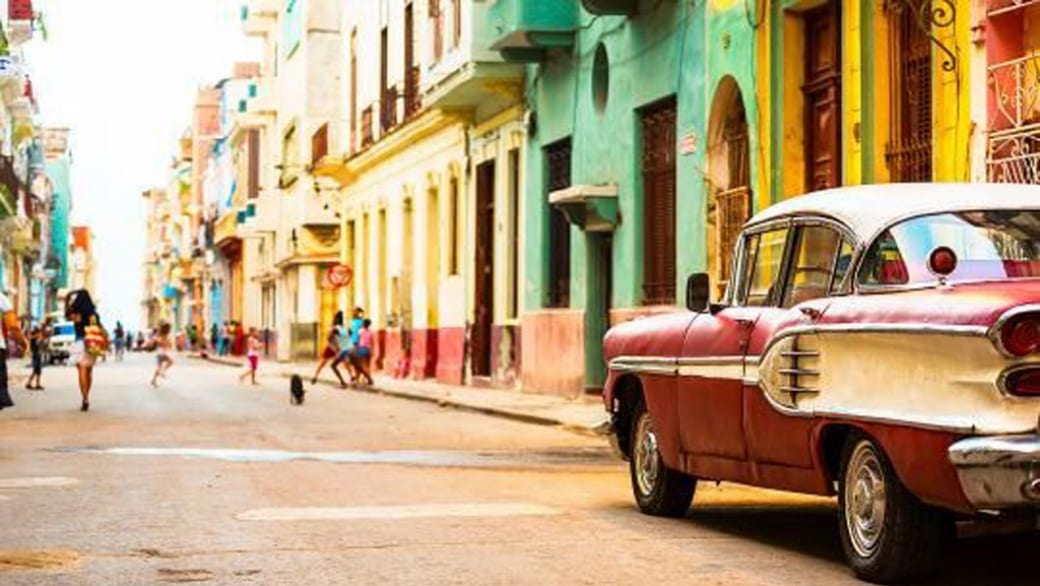
Have the famously rainbow-hued streets of Cuba become more gay-friendly?
(Courtesy Yahoo Travel, iStock)
The word on the street is that Cuba has gone gay-friendly.
Yes, the same Cuba that once imprisoned the gay poet Reinaldo Arenas and others just like him is reportedly opening its doors to the gay community. With that said, if I were a gay traveller, I’d be wary. The Caribbean is not exactly known for its hospitality toward gays, with Jamaica frequently topping the list of most gay-unfriendly destinations. With that said, both Santo Domingo and San Juan have made major strides in reaching the gay community.
For the last few years, Mariela Castro — daughter of President Raul Castro — has championed gay rights in Cuba, and the world has noticed. But does the country really deserve to be moved to the top of the gay travelers’ list?
Starting in October 1960, Americans were prohibited from visiting Cuba after a trade embargo soured relations between the two nations (the US placed a food and medicine export ban on Cuba and, two years later, imposed a ban on nearly all imports). That was, until nearly 55 years later, when President Obama announced his plans to heal diplomatic relations, and travel restrictions were lightened, allowing Americans to travel to the country for the first time in three generations.

In 2010, Mariela Castro (front, second from right), daughter of Cuban President Raul Castro,
participates in events leading up to the International Day Against Homophobia in Havana.
(Courtesy Yahoo Travel, AP Photo/Franklin Reyes, File)
But long before Obama stepped in to ease tensions and reopen borders, Cuba had already begun tackling a different political issue, one that would help reinvent the country as a place of acceptance and tolerance. Led by Mariela Castro, the current head of the Cuban National Centre for Sex Education, the Cuban government began making historic strides to become a gay-friendly country. Mariela’s LGBT rights initiatives began to change the way the world saw Cuba, and many legislative officials in the Caribbean began believing her political and societal stances could influence even greater human rights expansions.

Adela Hernandez, centre, the first known transgender person to hold public
office in Cuba, with her neighbors in the village of Caibarien in 2012.
(Courtesy Yahoo Travel, AP Photo/Ramon Espinosa)
In the 1960s and 1970s, during the reign of Fidel Castro, gays endured persecution and social exclusion, and even today gays in Cuba say the country is still in ideological transition. But there has been progress: In 2010 the Cuban government began supporting gay rights at the United Nations, and in 2012 the country elected its first transgender politician. This year, the country’s tourism offices began offering LGBT-focused press trips, flying in journalists from mainstream gay travel magazines so they could see for themselves just how welcoming the country had become.
With all the progress, members of the LGBT community visiting the country would be wise to curb their expectations. The land of the Castros is still a far cry from the land of the Castro — San Francisco’s gay neighborhood and ultimate gay mecca. It’s important to remember that for all its political gains and evolved, progressive LGBT policies, it’s still difficult to be gay in Cuba, and Americans should proceed with caution.
If you’re gay, and you find yourself about to land in the colourful, gorgeous, politically tumultuous black sheep of the Caribbean, what should you do? You’re here, you’re queer, now where the heck do you go? We’ve got you covered.

The Hotel Nacional is near both the beach and the Vedado neighborhood.
(Courtesy Yahoo Travel, iStock)
Havana is a winding labyrinth of colonial architecture, rowhouses of lime green, mango and fuchsia–colored streets where eccentric street performers dance on stilts for a few extra bucks, and even a few graffiti homages to Che Guevara.
The neighborhood you’re looking for is called the Vedado — the most modern part of Havana, located at Calle 23 and the Malecon (a waterfront seawall that runs the length of the city). This is where you’ll find gays hanging out, some outside the nearby Cine Yara, a local movie house.
If you’re looking at a map, the gay district’s boundary line is loosely accepted as beginning at the Cine Yara and extending all the way to the Coppelia ice cream parlor. Your best bet is to book a room at the nearby Hotel Nacional, a historic hotel near the water, with spacious rooms and hospitable staff (but sadly, no free Wi-Fi). The property has played host to Sinatra, the Beatles and the Backstreet Boys.
Travellers may also wish to rent “casas particulares,” local guesthouses run by Cuban families that welcome LGBT guests.
Casas Le Casa de Carlos & Julia is a cozy bed-and-breakfast run by a gay couple in the heart of the city.

Stop by La Bodeguita del Medio for some mojitos and tasty Cuban food.
(Courtesy Yahoo Travel, AP Photo/Desmond Boylan)
In the heart of the city, you’ll find gay locals sipping espresso or cooling off with a piña colada at Café El Mercurio, a cozy café near the Plaza de las Palomas. Bodeguita del Medio is another excellent hidden gem, one of the more authentic (and pricier) eateries you’ll find in town, serving up delicious Cuban food.
The nightlife options are still slim for gays in Havana. Most of the bars close at midnight, and there are no official gay bars in the city. Gay locals can be found at straight bars hosting gay nights, and they often prove to be excellent guides for gay travellers. Much as you would in Santo Domingo, connecting with gay locals — safely, of course, through local LGBT organizations – is your best bet to finding gay parties.
About an hour outside of Havana you’ll discover the popular gay beach Mi Cayito, and a few hours further, in Santa Clara, a spectacular gay club, Club Mujunje — an open-air epicenter that dedicates one night a week to drag shows.
It’s a whole new Cuba that would make poet Reinaldo Arenas very proud.
_______________________
(This article appears courtesy of Yahoo Travel and is part of a Yahoo series marking one year since the opening of relations between the United States and Cuba.
Kenny Porpora is author of The Autumn Balloon (Grand Central Publishing, 2015). He’s written for The New York Times, New York Daily News, Newsday and has been an editor for The Huffington Post.)


 Why you can trust Xtra
Why you can trust Xtra